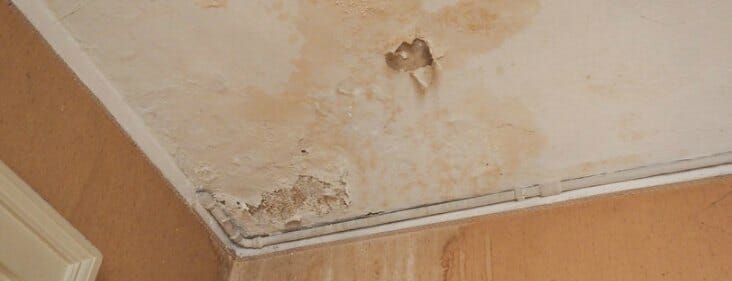Each person seems to have their unique opinion with regards to How to detect water leaks in your home.

Leaks not only trigger waste of water yet can also create unnecessary damages to your home and also promote undesirable organic development. Unfortunately, water leakages may go unnoticed since a lot of the pipework in our house is hidden. By recognizing and also looking for day-to-day scenarios that trigger leaks, you can protect your home from future leaks and unneeded damage. Today, we will look at 6 leak creates that might be creating your pipes to leak.
Intruding roots
A lot of water leakages begin outside the house rather than inside it. If you notice an abrupt decline in water stress, state in your faucet, require time to go out as well as examine your lawn. You might notice wet patches or sinkholes in your lawn, which may mean that tree roots are attacking water lines triggering water to leak out. You can have your plumber check for intrusion, especially if you have trees or shrubs near your residential property.
Rusty water supply
As time goes by, your plumbing system ages and also deterioration such as rust might start gnawing the pipelines. This might be the root cause of discoloration or warping on your water pipes. This asks for an evaluation with your plumber right away. Consider replacing the pipes since they are at a greater danger of deterioration than the newer versions if our plumbing system is old.
Faulty Pipeline Joints
Pipeline joints can wear away over time, resulting in water leakages. If you have noisy pipelines that make ticking or banging noises, specifically when the hot water is turned on, your pipe joints are most likely under a lot of stress.
Immediate temperature level changes.
Extreme temperature level modifications in our pipes can trigger them to broaden as well as acquire unexpectedly. This expansion and contraction may create fractures in the pipelines, specifically if the temperature are below freezing. It would be best if you watched on how your plumbing functions. The visibility of the previously mentioned conditions often shows a high threat.
Poor Water Connectors
At times, a leak can be created by loosened tubes and pipelines that supply your devices. In situation of a water connections leak, you might notice water running directly from the supply line or puddles around your devices.
Obstructed Drains
Obstructed drains pipes may be annoying as well as inconveniencing, yet they can sometimes wind up triggering an overflow causing break pipelines. Keep getting rid of any materials that might go down your drains that can clog them to prevent such troubles.
All the above are root causes of leaks yet not all water leaks arise from plumbing leaks; some leakages could come from roofing leakages. All leaks must be fixed quickly to prevent water damages.
Leakages not only create waste of water yet can also cause unnecessary damages to your home as well as promote undesirable natural growth. By looking and also recognizing for day-to-day situations that create leaks, you can secure your home from future leakages as well as unneeded damages. Today, we will look at six leak causes that may be creating your pipes to leak.
At times, a leakage can be caused by loose hose pipes and pipes that supply your appliances. In situation of a water links leak, you might notice water running directly from the supply line or pools around your home appliances.
How To Check For Water Leak In Your Home
How To Check for Leaks
The average household's leaks can account for nearly 10,000 gallons of water wasted every year and ten percent of homes have leaks that waste 90 gallons or more per day. Common types of leaks found in the home are worn toilet flappers, dripping faucets, and other leaking valves. These types of leaks are often easy to fix, requiring only a few tools and hardware that can pay for themselves in water savings. Fixing easily corrected household water leaks can save homeowners about 10 percent on their water bills.
To check for leaks in your home, you first need to determine whether you're wasting water and then identify the source of the leak. Here are some tips for finding leaks:
Take a look at your water usage during a colder month, such as January or February. If a family of four exceeds 12,000 gallons per month, there are serious leaks.
Check your water meter before and after a two-hour period when no water is being used. If the meter changes at all, you probably have a leak.
Identify toilet leaks by placing a drop of food coloring in the toilet tank. If any color shows up in the bowl after 10 minutes, you have a leak. (Be sure to flush immediately after the experiment to avoid staining the tank.)
Examine faucet gaskets and pipe fittings for any water on the outside of the pipe to check for surface leaks.
Undetected water leaks can happen without the home or business owner even realizing. If you suspect a water leak, but not able to find the source. It is time to contact a professional water leak detection service, The Leak Doctor.
How To Find a Water Leak In Your Home
https://www.leakdoctor.com/blog/How-To-Check-For-Water-Leak-In-Your-Home_AE197.html

We had been made aware of that write-up on How Fast Water Damage Can Ruin Your Home from a friend on our other web blog. Sharing is nice. You just don't know, you will be helping someone out. Thanks for your time. Please visit our blog back soon.
Ring, relax, resolved!